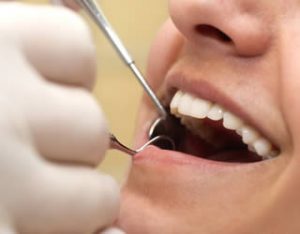What Happens When Your Wickford Dentist Fills A Tooth?
Many of you will have had a filling but do you know what happens during the procedure?
 Fillings are the most common restorative treatment that our Wickford dentists carry out on an almost daily basis. Even for people who look after their teeth well, there is still a small possibility of decay and a cavity forming. These cavities are usually detected during your six monthly check ups which enables us to restore them before too much damage has been done.
Fillings are the most common restorative treatment that our Wickford dentists carry out on an almost daily basis. Even for people who look after their teeth well, there is still a small possibility of decay and a cavity forming. These cavities are usually detected during your six monthly check ups which enables us to restore them before too much damage has been done.
If you suspect you may have a problem between your appointments, such as if experiencing a toothache, please contact us straight away and don’t wait until your next regular appointment. If you leave longer gaps between check ups or you don’t take care of your teeth as you should, you are likely to require larger fillings due to the progression of the problem.
When your dentist carries out a filling procedure, you will hear sounds and experience sensations that may lead you to imagine what is happening to the tooth. In today’s blog, we are going to go one step better and tell you what actually happens when we fill your tooth.
Preliminaries
Naturally, the first step is to detect if any decay is present. Often this is visible during an inspection and can be diagnosed quite easily. Sometimes though, it may not be as obvious and we ask patients of the Cygnet Dental Practice to let us know if they are experiencing any discomfort in a tooth so that we can investigate further. In some cases, bacteria may have entered via a tiny crack in the enamel which is difficult to detect. If there is no obvious visible sign of decay, but you are experiencing a toothache, we may take x-rays or scans to determine the problem.
Anaesthetic
The next step is to prepare the patient so that they have as comfortable experience as possible. Once you are seated comfortably, a local anaesthetic will be given to numb the area of the tooth that is to be filled. Some patients say that they don’t like this, partially due to anxiety around needles. Some also say that it is painful but the reality is that you don’t really feel the injection itself, and any discomfort comes from the anaesthetic meeting the warm blood in the area. This only lasts for a second or two though and once it has taken effect, the procedure can begin.
Decay removal
The next stage is to remove any infected material. This is usually done using a dental drill and your dentist will remove all the infected material and prepare the cavity in order for it to be filled. The cavity will also be cleaned to ensure the removal of any remaining bacteria that could lead to further decay. There are a number of materials that can be used to fill a tooth. The main ones used are amalgam or a composite tooth coloured filling material. Both of these offer a strong solution for restoring the tooth, with the composite one providing a more natural appearance.
Depending on the type of filling used, the dentist may adjust the shape of the cavity to accommodate the filling. Generally speaking, the use of a composite white filling requires less of the tooth to be removed than an amalgam one.
Filling the tooth
Before starting the treatment, the dentist will have asked the assistant to prepare your filling so that it is ready to be used. This will then be used to fill the cavity, making sure to pack it in tightly so as not to leave any gaps as further decay may occur if this happens. Finally, you will be asked to bite on the new tooth surface so that the dentist can shape the new filling to make it feel as natural and comfortable as possible for the patient.
Your dentist may advise you not to eat or drink anything for a short period of time, following the treatment, to allow the filling material to harden completely. The anaesthetic will wear off within a short period of time too.
Root canal fillings
One type of filling which is a little different from the above is the root canal filling. This is needed when the soft pulp of the root canals becomes infected. This is usually detected by x-rays. To fill the canals, the top of the tooth is detached and the infected materials removed before the canals are thoroughly cleaned to remove any remaining bacteria. Unlike regular fillings, neither amalgam or composite is used to fill the canals, but instead, Gutta Percha is used which seals the canals effectively. Finally, a crown is usually attached to complete the restoration.
We hope that you found this article useful and would like to remind patients that our Wickford dental team are always happy to explain a procedure to you if you wish to know. Some people would rather not know, of course, and that is understandable, but if you would like to understand more about your treatment, please ask your dentist.
If you have a toothache and think you might need a filling, or for any other dental issues or to make a general appointment, you can contact the Cygnet Dental Practice today by calling us on 01268 733078.
